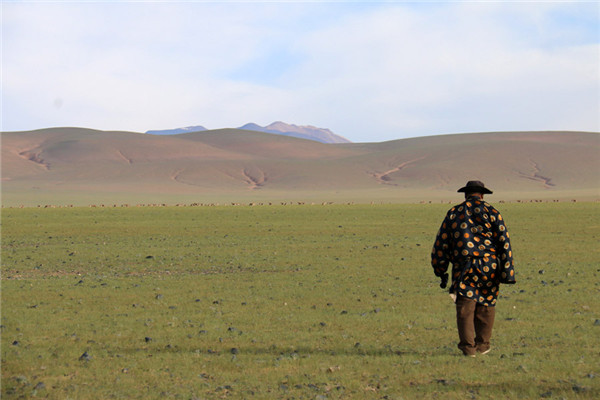Guardian of wildlife in northern Tibet
 0 Comment(s)
0 Comment(s) Print
Print E-mail CRI, August 21, 2015
E-mail CRI, August 21, 2015
The Tibetan antelope, or chiru, is the wildest creature on the Tibetan Plateau.
Well-known for its exceptionally fine fur, the species was rapaciously poached and was driven to the brink of extinction years ago.
But nowadays, these leggy, hoppy animals are making a comeback, thanks to people who dedicate their lives to safeguarding the breed.
Gagya Darma is one of them.
Changtang, which means "northern wilderness" in Tibetan, is a vast, desolate highland stretching across Tibet Autonomous Region, Xinjiang Uyghur Autonomous Region and Qinghai Province. Due to its high elevation, even in the summer, the weather here is harsh and windy.
But when the first sunlight washes over Nyima County of southern Changtang, 58-year-old Gagya Darma has already raced over on his motorcycle.
"There is no regular hour for me to leave home. But basically, I take off for patrol around 7, 8 o'clock in the morning and come back home around 6 or 7 PM. If there is a large number of chiru , I will ride to the snowy mountainous area, which usually takes me a day, " said Gagya Darma.
Once a veterinarian, Gagya Darma has been a mountain patrol for the past 15 years. A motorcycle, a telescope, a bedding roll, plus a bag of rations for one-day journey, are his daily outfits.
"The size of my patrol area is around four hundred square kilometers, which equals with two Tibetan counties. Since many people live nearby, I need to remain vigilant all the time. If someone drives cars or motorcycles into the reserve, I will question their motives and exhort them to leave," said the 58-years old.
The area that Gagya Darma cruises around belongs to Changtang National Nature Reserve. Established in 1990s, it is the world's second largest nature reserve as well as the habitat for many endangered species, including chiru, Tibetan wild ass, snow leopard and black-necked crane. Thus keeping an eye on local fauna is a patrol's priority.







Go to Forum >>0 Comment(s)